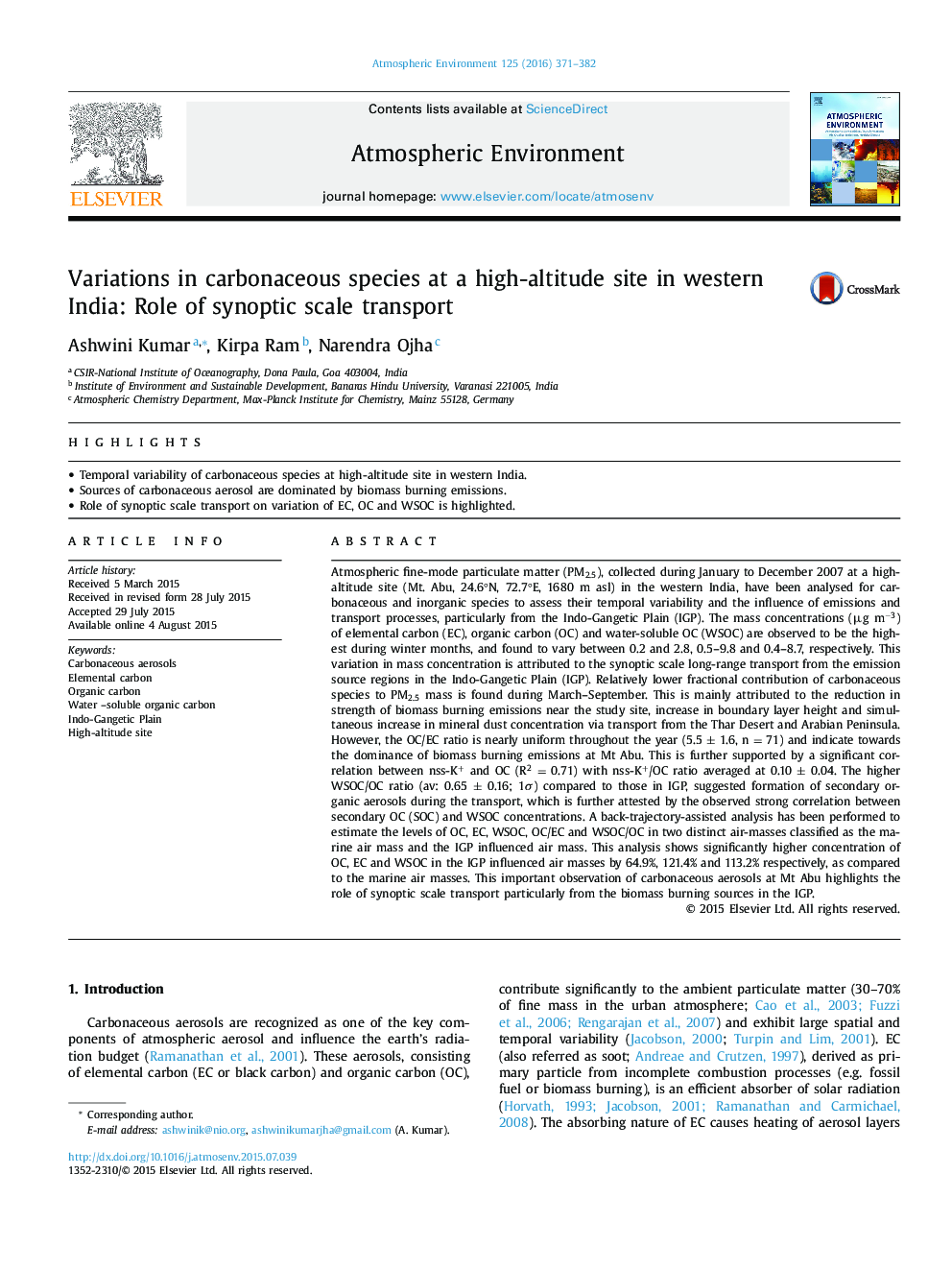| کد مقاله | کد نشریه | سال انتشار | مقاله انگلیسی | نسخه تمام متن |
|---|---|---|---|---|
| 4438068 | 1310929 | 2016 | 12 صفحه PDF | دانلود رایگان |
• Temporal variability of carbonaceous species at high-altitude site in western India.
• Sources of carbonaceous aerosol are dominated by biomass burning emissions.
• Role of synoptic scale transport on variation of EC, OC and WSOC is highlighted.
Atmospheric fine-mode particulate matter (PM2.5), collected during January to December 2007 at a high-altitude site (Mt. Abu, 24.6°N, 72.7°E, 1680 m asl) in the western India, have been analysed for carbonaceous and inorganic species to assess their temporal variability and the influence of emissions and transport processes, particularly from the Indo-Gangetic Plain (IGP). The mass concentrations (μg m−3) of elemental carbon (EC), organic carbon (OC) and water-soluble OC (WSOC) are observed to be the highest during winter months, and found to vary between 0.2 and 2.8, 0.5–9.8 and 0.4–8.7, respectively. This variation in mass concentration is attributed to the synoptic scale long-range transport from the emission source regions in the Indo-Gangetic Plain (IGP). Relatively lower fractional contribution of carbonaceous species to PM2.5 mass is found during March–September. This is mainly attributed to the reduction in strength of biomass burning emissions near the study site, increase in boundary layer height and simultaneous increase in mineral dust concentration via transport from the Thar Desert and Arabian Peninsula. However, the OC/EC ratio is nearly uniform throughout the year (5.5 ± 1.6, n = 71) and indicate towards the dominance of biomass burning emissions at Mt Abu. This is further supported by a significant correlation between nss-K+ and OC (R2 = 0.71) with nss-K+/OC ratio averaged at 0.10 ± 0.04. The higher WSOC/OC ratio (av: 0.65 ± 0.16; 1σ) compared to those in IGP, suggested formation of secondary organic aerosols during the transport, which is further attested by the observed strong correlation between secondary OC (SOC) and WSOC concentrations. A back-trajectory-assisted analysis has been performed to estimate the levels of OC, EC, WSOC, OC/EC and WSOC/OC in two distinct air-masses classified as the marine air mass and the IGP influenced air mass. This analysis shows significantly higher concentration of OC, EC and WSOC in the IGP influenced air masses by 64.9%, 121.4% and 113.2% respectively, as compared to the marine air masses. This important observation of carbonaceous aerosols at Mt Abu highlights the role of synoptic scale transport particularly from the biomass burning sources in the IGP.
Journal: Atmospheric Environment - Volume 125, Part B, January 2016, Pages 371–382
